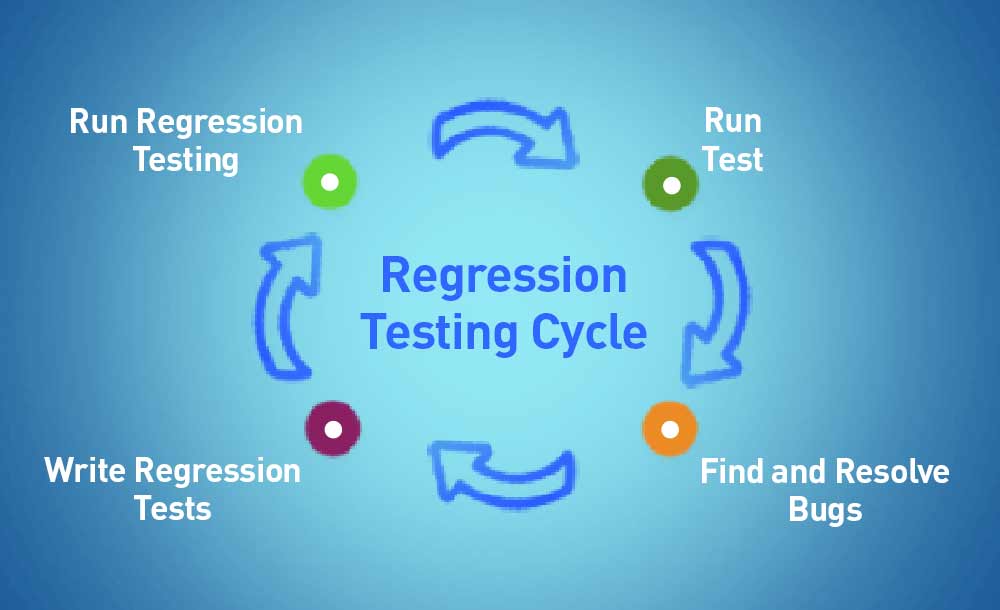Software Engineering | 23 Sep 2022 | 9 min
Regression Testing: How It Works

Regression testing is an important phase of the ETL testing process. It is a testing technique to make sure that the existing product works fine with new functionality, bug fixes, or any change in the existing feature. Regression testing goes underway after functionality checklist of the new changes is performed.
All the test cases are re-executed to cross-check whether the existing functionality of the application is working fine, and the new changes have not produced any bugs. Take a look at the regression testing cycle:

We perform regression testing whenever the production code is changed. It should be taken up:
For example, a mobile application has a login functionality which allows users to login ONLY with email. Now providing a new feature to login with email or mobile number.
For example, removing the existing “Remember Password” functionality from login screen.
For example, assume that login functionality is not working on the webpage and a tester reports the bug. Once the bug is fixed by developers, the tester tests it to make sure the login functionality is working as per the expected result. Simultaneously, tester tests other functionalities like forgot password, login on mobile, login via SSO are also working fine (which are related to the login).
For example, loading the screen on the application that has training videos takes 7 seconds, reducing the load time to 3 seconds.
Usually, five environments are used in SDLC: (1) dev instance, (2) stage instance (3) alpha instance (4) beta instance (5) production instance. Whenever the product code is deployed on the next instance, regression testing assures that the software product performs flawlessly on each environment.
For example, when we release the product, it is important to test the functionality at production instance as well.
Regression testing can be performed manually or can be automated to run daily. Prioritizing the regression test cases depending on critical and frequently used functionalities. In the case of frequent regression testing, it is more effective to automate the test cases.
Manual regression testing is the most diligent form of precaution testing you can apply before you move on to the next phase of your product’s journey.
The automation team at Nitor Infotech progresses on automating test cases on web and mobile applications. Working in agile paradigms, releases, and software revisions are frequent. With this, a rapid regression testing process is required, using which product teams can receive more informative feedback and respond instantly. You might need to re-run regression tests. Automated tools allow you to do so quickly and efficiently.
Automating regression means to automate the application of workflows, plans, scripts, and other activities.
Additionally, learn more about user acceptance testing in our blog.

Functionality testing only inspects the behavior of the new features and functionalities. However, it still needs to confirm their compatibility with the existing ones. Therefore, without regression testing, it is more difficult and time-consuming to investigate the root cause and the architecture of the product.
That’s why developers and testers must not leave even the smallest stone unturned to check for what is NOT supposed to go out.
Send us an email at Nitor Infotech with your feedback about this blog. Learn more about our quality engineering services.

we'll keep you in the loop with everything that's trending in the tech world.
